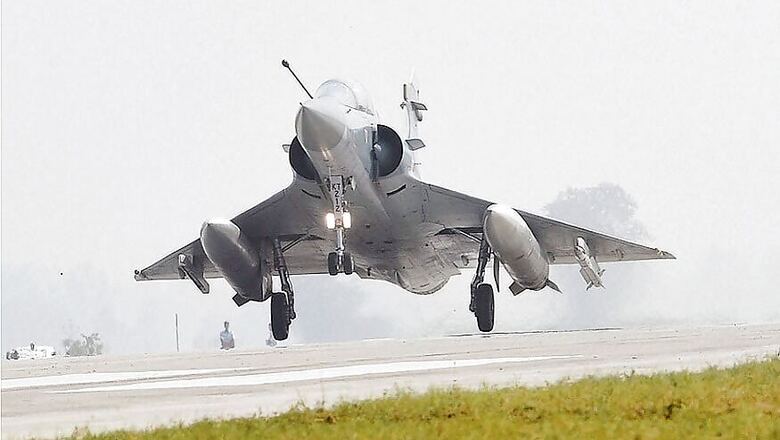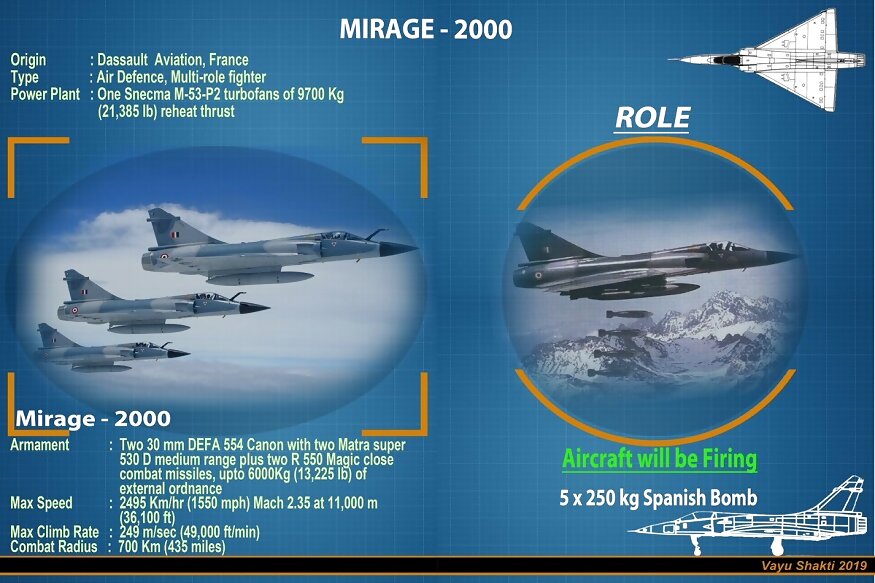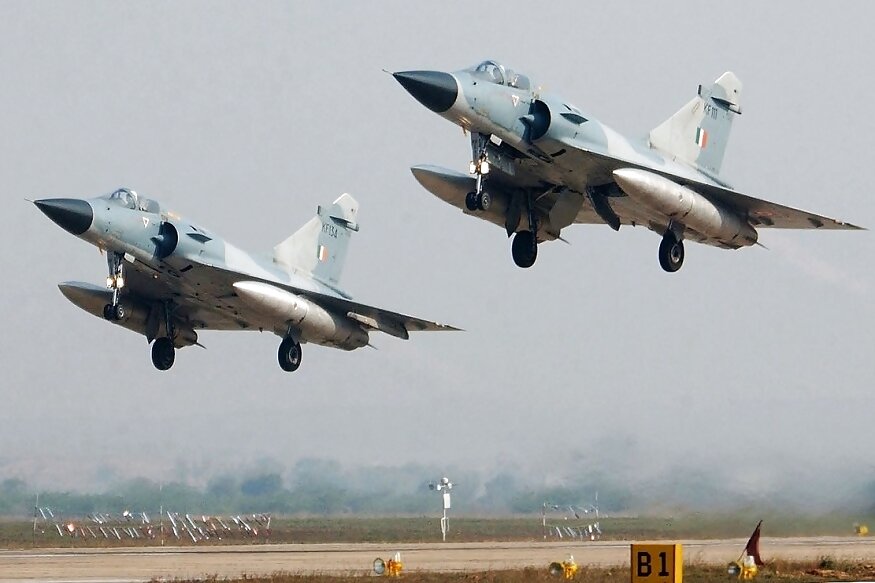
views
In the early hours of Tuesday, 12 Indian Air Force Mirage-2000 fighter jets, made by Dassault Aviation, the French company who also manufactures the Rafale Medium Multi-Role Combat Aircrafts, entered Pakistani airspace and dropped 1,000-kg laser-guided bombs on Jaish-e-Mohammed terror launch pads across the Line of Control. While India has many new-age fighter jets like the Sukhoi Su-30MKI and MiG 29, apart from the indigenously developed Tejas LCA in its arsenal, it was again the Mirage-2000 jet, which was used in the Kargil war, that was used for the unprecedented cross-border strike. Indian government sources told CNN-News18 that there were over 200 casualties in the strike, which targeted the biggest JeM hideout in Balakot in a counter-terrorism operation.

Here’s all you need to know about this Dassault Mirage-2000 fighter jet!
History
The Mirage-2000 is undoubtedly one of the Indian Air Force's (IAF) most versatile and deadliest aircraft and it was first commissioned in 1985. Soon after inducting the Mirage, IAF gave it the name – Vajra – meaning lightening thunderbolt in Sanskrit. It was developed by Dassault Aviation and took its first flight in 1978 and was inducted in the French Air Force in 1984. India had placed an initial order of 36 single-seater Mirage-2000 and 4 twin-seater Mirage 2000 in 1982 as an answer to Pakistan buying US-made F-16 fighter jets by Lockheed Martin.
The Mirage-2000 played a decisive role in the 1999 war of Kargil and turned it in India’s favour.
Seeing the success of the jets, the government placed an additional order of 10 Mirage-2000 planes in 2004, taking the total tally to 50 jets. Then in 2011 a contract was signed to upgrade the existing Mirage-2000 jets to Mirage 2000-5 Mk, increasing the life of the jets that are now ready to serve till 2030. Dassault built an estimated 580 Mirage-2000s over a course of 30 years before replacing it with the Rafale MMC jets.
Specifications
The Mirage-2000 uses a single shaft engine that is light and simple as compared to other fighter jet engines and is called SNECMA M53. The engine was first tested in 1970 and was not made initially for the Mirage jets. In 1974, Dassault Aviation conducted flight tests of the M53-2 version using its Mirage F1E testbeds. The majority of the Mirage 2000 is powered by the SNECMA M53-P2 engine.
The Mirage is ideally designed to seat a single fighter pilot, but can be made into a twin-seat jet depending on the armed forces' requirements. It has a length of 14.36 metre and a wingspan of 91.3 metre. The plane weighs 7500 kg (dry) and has a total takeoff weight of 17000 kg. The Mirage 2000 has a maximum speed of Mach 2.2 (2336 kmph) and can travel 1550 km with drop tanks. The flight height is capped at 59000 ft (17km).
In comparison, Indi'as other fighter and more advanced fighter jet - the Russia made Sukhoi Su30MKI has a speed of 2120 kmph (Mach 2), slower than the Mirage-2000 and is heavier too. This gives the Mirage-2000 an advantage in quick operations.
The Mirage 2000 has a fly-by-wire flight control system and has a Sextant VE-130 HUD, which displays data related to flight control, navigation, target engagement, and weapon firing. In terms of the armament, the Mirage 2000 can carry laser guided bombs, air-to-air and air-to-surface missiles and has a Thomson-CSF RDY (Radar Doppler Multi-target) radar on board.

Countries using Mirage 2000
Apart from India, Dassault sold the Mirage 2000 to 8 other countries, including the home country of France, Egypt, UAE, Peru, Taiwan, Peru, Greece and Brazil. While Brazil has retired the Mirage 2000, other counties are still using this jet. A total of 583 Mirage-2000 fighter jets were built over a course of 30 years and its successor Rafael has already been ordered by the IAF.
Not only is the Mirage-2000 a trusted partner in India's previous success in Kargil, it is also immensely capable to carry out Surgical Strikes and attacks whenever possible, thanks to its load-carrying capacity, precision, Laser Guided Bombs and latest technology updates!


















Comments
0 comment